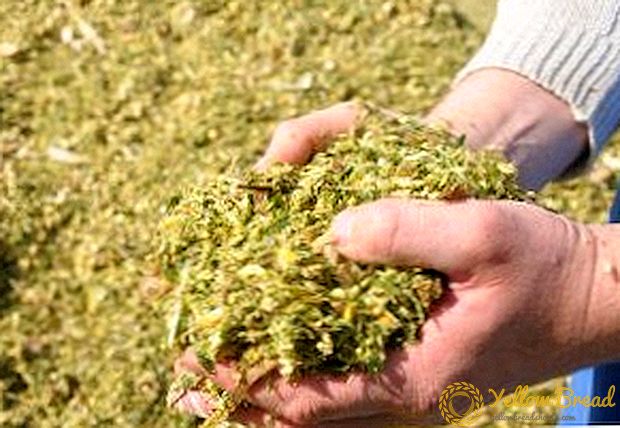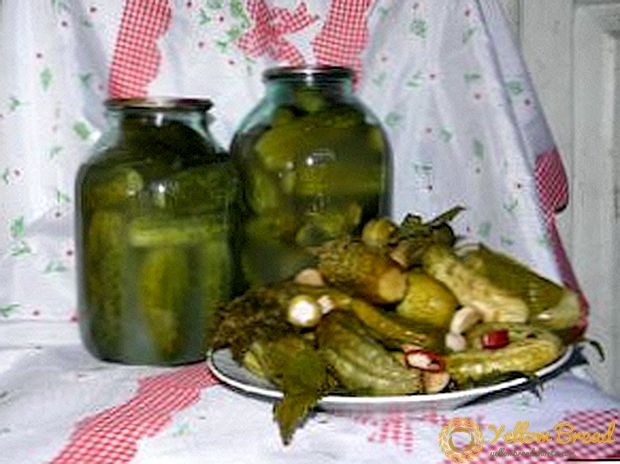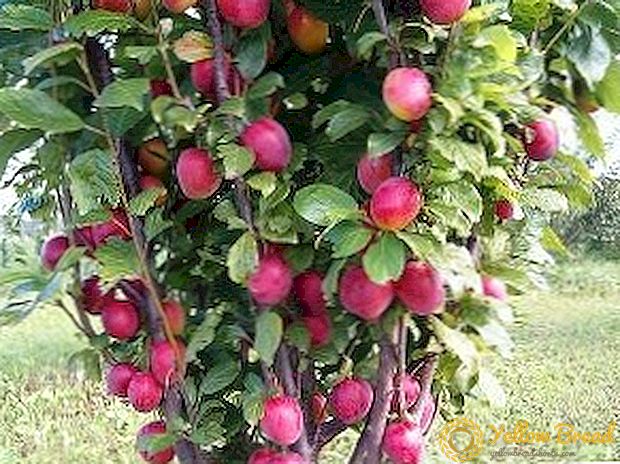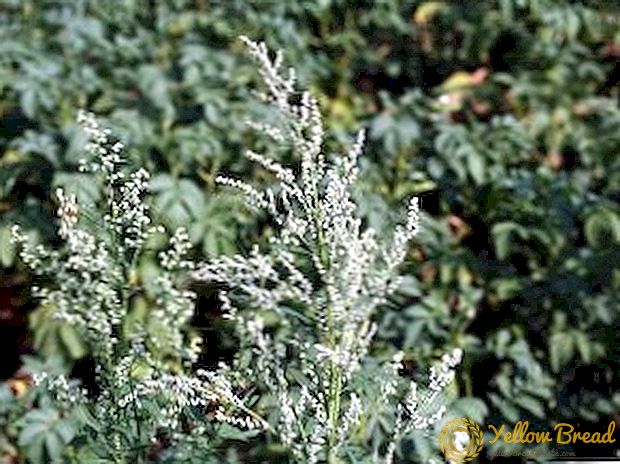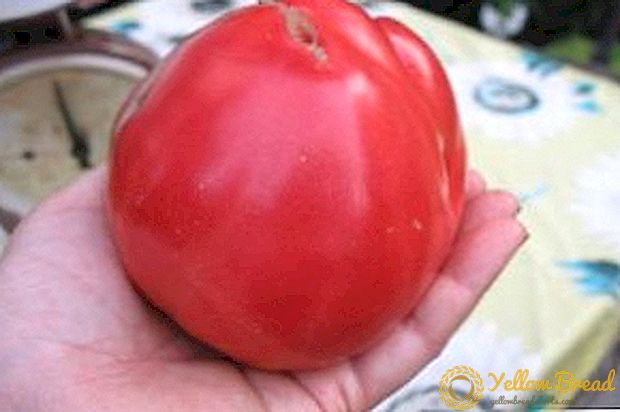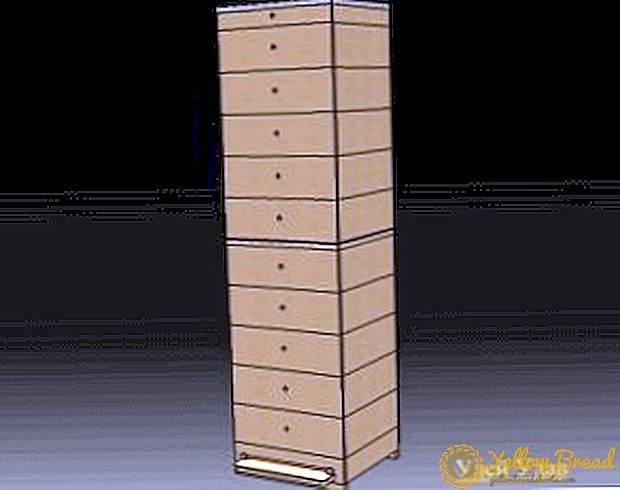 Beekeeping is an interesting activity that can grow from a hobby into a serious source of income. However, not everyone can be engaged in beekeeping and the more so earn on it. It requires serious knowledge, extensive experience, a person must wholeheartedly love the work in which he is engaged and, importantly, have some physical strength, since the beekeeper accessories and devices, as well as the actual products, have a decent weight.
Beekeeping is an interesting activity that can grow from a hobby into a serious source of income. However, not everyone can be engaged in beekeeping and the more so earn on it. It requires serious knowledge, extensive experience, a person must wholeheartedly love the work in which he is engaged and, importantly, have some physical strength, since the beekeeper accessories and devices, as well as the actual products, have a decent weight.
The hive "Boa", developed by Vladimir Davydov, is compact and easy to maintain, as well as comfortable for bees. The complexity of servicing this bee house is small, and the result, which is pcheloproduktsiya, fully justifies the efforts.
- Description and design features
- Pros and cons of hives
- Making "Boa" do it yourself
- Materials and tools
- Step by step production
- The content of bees in "boas"
Description and design features
"Boa" is a small compact multi-body beehive, the frame area of which is one-fourth of the frame area of the beehive "Dadan". Here the frame dimensions are 110 × 280 mm.
Framework "Boa" wide and thin, the upper bar has a kerf through which a canvas is placed in the frame. Additional fixation with wire is not required due to its small size. A standard sheet of honeycomb under the Dadanovsky hive is divided into four parts without remainder, such a quarter ideally becomes framed in the "boa".

 Hive case "boa" has dimensions of 375 × 360 × 135 mm. It fits 9 frames. In the front wall of each there is a notch of 19-millimeter diameter. When the whole body is filled with honey, it weighs 12 kg, the weight of the empty one is 3 kg.
Hive case "boa" has dimensions of 375 × 360 × 135 mm. It fits 9 frames. In the front wall of each there is a notch of 19-millimeter diameter. When the whole body is filled with honey, it weighs 12 kg, the weight of the empty one is 3 kg.  At the detachable bottom there is a sliding insert and tap hole. The specific design of the bottom allows you to successfully deal with ticks, provides ventilation, makes it easy to transport hives and care for insects.
At the detachable bottom there is a sliding insert and tap hole. The specific design of the bottom allows you to successfully deal with ticks, provides ventilation, makes it easy to transport hives and care for insects. The design of the hive "Boa" is quite simple and at the same time very easy to maintain and successful for the bees, and most importantly, it is quite realistic to make it with your own hands if you have the right tool. This will be the best option, since the beekeeper, who personally made the hive, has thoroughly studied its structure and can modernize it according to his own needs.
The design of the hive "Boa" is quite simple and at the same time very easy to maintain and successful for the bees, and most importantly, it is quite realistic to make it with your own hands if you have the right tool. This will be the best option, since the beekeeper, who personally made the hive, has thoroughly studied its structure and can modernize it according to his own needs.Hive "Boa" has certain features:
- it has neither pillows for warming, nor a podryshnik, the small size of the frame and the compactness of the structure allow maintaining the temperature balance;
- the structure consists of sections, which, if necessary, are removed or, on the contrary, are added, and this principle allows you to care for the bees in such a way that even in a fairly cold time their home does not cool when the section is replaced;
- during the processing of ticks, which is made twice or thrice a year, a specifically designed bottom comes to the rescue, which allows you to remove harmful insects without disassembling the entire hive;
- those who use the Boa hive are more likely to divide families artificially instead of swarming;
- the frame "Boa" has a sufficiently small size in order not to use nucleus hives in addition, when it becomes necessary to remove females;
- in winter, due to the small size of the frame, the bees are, firstly, able to maintain a comfortable temperature, and secondly, they fully master the frame.
Pros and cons of hives
Consider the pros and cons of this design. Hive "Boa" gained recognition in the beekeeping environment thanks to its advantages:
- Due to the fact that the body has a small height, it is not necessary to knock down the shields during its manufacture.
- Fold fastenings give the structure stability when the cases are mounted one on another.
- When the section is full, it weighs about 12 kg, in order to lift and move it, it does not require much effort and there is no need for an assistant.
- Due to the small size of the frames, it is not necessary to reinforce them with wire.
- Medogonka cassette accommodates two small frames "Boa".
- A standard sheet of honeycomb, divided exactly into four parts, is suitable to fill the four frames of the Boa, leaving no waste.
- Plowing takes a few seconds and occurs through a slot in the upper part of the frame.
- Frames, due to their small size and lack of wire, are very convenient to sell honey comb.
- All parts of the hive are standardized, unified, which makes it much easier to work with it.
- Due to the fact that the framework of the same size, it is easier to collect the nest, preparing it for winter.
- The total volume of the hive is not fully used due to the fact that the sections and frames are quite small and there is a lot of unoccupied space. However, this empty space allows bees to easily maintain cells and cells, having access to them, as well as navigate through the streets and freely contact with the uterus.

Beehive "Boa" is good because its design allows you to control the state of bee colonies and the level of honey produced, and also has excellent ventilation due to the abundance of letkov.
But, as it happens in most cases, he has some disadvantages that are rather features:
- Because of the small volume of the Boa hull, they need about five for the wintering of a bee colony, which requires only one Dadan for this purpose.
- The small area of the bottom makes the structure less stable, but the low windage of the whole bee house, on the contrary, adds stability.
- It takes a little time and materials to make the section "Boa" relatively, however, if you consider that it contains two and a half frames of the hive "Dadan", the conclusion is that it is still quite laborious.
Making "Boa" do it yourself
The master, who decided to build his own hives for the bees of the Boa structure, should be stocked with the necessary knowledge, patience, materials and tools. At the beginning of the construction of the body, then you need to check its size. This is the basis of the future hive, and when it is ready, proceed to making the bottom and cover. After the hive is made, its wood should be painted to extend the life of the product.

Materials and tools
For the "Boa" hive, you will need:
- boards 35–40 cm long, 5 cm thick and 14–15 cm wide;
- a circular saw;
- small carnations (25 mm), with which you will collect the frame;
- hammer;
- furniture stapler and staples (14 mm) to it;
- vise for fixing the frame when plowing;
- nails 50 mm;
- self-tapping screws of the same length;
- electric drill and 12 mm drill bit;
- ruler and protractor;
- Bulgarian;
- means for painting the hive "Healthy Home" or "Pinotex".
Step by step production
The tree for the hive must be well dried to avoid deformation due to swelling or drying out during operation of the finished product. It should be borne in mind that during drying the board is also deformed, as if arching on one side and sagging on the opposite. How to prepare the base surface blanks for the further manufacture of the hive, see the video.
Hive case fabrication "Boa"
First make the body of the hive, then measure it, checking the correctness of the obtained dimensions. External dimensions of the case: 375 × 360 × 135 mm, internal: 335 × 300 × 135 mm.
Using a circular saw, you need to prepare two billets 135 × 400 mm from a 50-millimeter board, these are the future front and rear walls, and one billet 135 × 360 mm is the basis for the side walls, which are 20 mm thick, so that the resulting billet is to be cut in two appropriate sizes.
The thickness of the front and rear walls of 30 mm, so that the workpiece from which they will be made, should also be brought to the desired size. Thus, you get two blanks 375 × 135 × 30 for the front and rear and 340 × 135 × 20 for the side walls of the case.
The video shows in detail how to prepare correctly, what tools to use, and some nuances are indicated.
- 11 × 15 mm - to connect the enclosures;
- 11 × 15 mm - under the frame;
- 20 × 20 mm - for connecting the front and side walls;
- 15 × 20 mm on the front and rear walls of the case.
How to choose the quarters on a circular saw or a milling machine, described in detail and shown in the video.
Using a milling machine or a circular saw in the side wall, you need to make a groove for the handle for ease of operation on the size of your own hand, and also drill a 13-mm notch in the front wall.
Having set the workpiece with the help of the conductor at an angle of strictly 90 degrees, they are fastened with the help of nails or screws. If unnecessary protrusions remain after assembly, they are removed with a sander or circular saw.
In the video, all the above operations are shown in detail and with nuances.
Frame making
Frame rails have the following dimensions:
- top - 320 × 23 × 3 mm;
- lower - 280 × 23 × 3 mm;
- lateral - 106 × 35 × 7 mm.
Thus, the dimensions of the finished frame are 280 × 110 mm.
In order to quickly, safely and conveniently dismiss the bars on the slats for the framework, you can build a jig, as shown in the video.
Having dismissed the bars and getting a sufficient number of rails, you can begin to assemble the framework. A conductor is also being built for this, since it is long, inconvenient to work with each frame separately, and it is almost impossible to observe right angles.
The author of the video proposes a method of manufacturing a conductor, with which you can simultaneously assemble 9 frames at once, as much as is required to fill one body of the Boa.
Bind the slats with small studs or furniture stapler.
The Boa has a combined bottom, it is equipped with an anti-barrotic grating, which also serves as the floor. Under it is a plywood liner that can be extended. This may be necessary for additional ventilation of the bee house. By varying the position of the liner, the beekeeper regulates the temperature both in the roast and in the cold season.
The bars of the combined Donets have dimensions:
- the front one is 375 × 90 × 30 mm, a quarter of 11 × 15 mm is selected at the top, 20 × 20 mm on each side, it is equipped with a 335 mm notch through which the mesh insert is inserted at an angle, and it moves in grooves made in the side bars . On the front wall is a removable arrival board with dimensions of 316 × 60 × 16 mm.

- rear - 375 × 50 × 30 mm, upper fold - 11 × 15 mm, side - 20 × 20 mm. The rear wall is retractable, it is attached to the movable plywood.
- lateral - 340 × 90 × 20 mm, the upper quarter - 11 × 15 mm, after the bottom is assembled, remove 1 mm fold, protruding on the sides.
Making a cover for the hive "Boa"
The product has dimensions of 375 × 360 × 70 mm and consists of:
- front and rear wall - 375 × 65 × 20 mm with side and lower folds 20 × 11 mm, in the front wall there is a notch 13 mm in diameter, which can be closed if necessary;
- side walls - 342 × 65 × 20 mm with a selected bottom quarter of 20 × 11 mm;
- plywood sheet for the top of the roof - 375 × 360 × 4 mm;
- plywood sheet for the "ceiling" - 354 × 339 × 4 mm with a 30-mm-diameter hole in the center;
- foam 335 × 318 mm;
- tin blanks for roofing - 415 × 400 mm with a 2-centimeter bend on the sides.
At a distance of 20 mm from the top, along all four walls, a slot was made for ceiling plywood 4 × 6 mm.
The manufacturing techniques of the cover are shown in detail in the video.
The content of bees in "boas"
The hive of this design does not take a lot of time and effort for maintenance. Bees often overwinter in five buildings.After the end of the wintering season, they make the first fly-around, and after that some attention should be paid to their striped pets.
As a rule, there are no bees in the first and second (lower) enclosures; they should be removed, the bottom of the accumulated debris should be cleaned, the bees should be examined for brood and the number of bees should be estimated. With a satisfactory result, the hive must be closed.
Further it is necessary to proceed from temperature and other weather conditions. At the right time, you need to add a frame containing a thickness and additional housing. After the first flight, a week later, the first corps, with a wrinkle, is added. It is placed where there is a nest with brood, located in the cut. The following corps, when necessary, are placed above the previous ones.  If there is a need to replace the uterus or to prevent swarming, create artificial swarming. The corpus, where the uterus is located, is withdrawn, and one more is added above and below it.Three days later, this new hive is placed near the old one, from which the flight bees will soon move to a new one. If the next inspection it turns out that they are too constrained, you need to give them more honeycombs in the amount of one body.
If there is a need to replace the uterus or to prevent swarming, create artificial swarming. The corpus, where the uterus is located, is withdrawn, and one more is added above and below it.Three days later, this new hive is placed near the old one, from which the flight bees will soon move to a new one. If the next inspection it turns out that they are too constrained, you need to give them more honeycombs in the amount of one body.
When the main honey collection comes, the first and second corps should be removed, they are often empty or full of perga. From the rest of the frame extorted content. For the winter, bees should leave two bodies with printed honey, during this period bees eat 6-8 kg of honey.
 The hive "Boa" is convenient for beginner beekeepers, as well as it is useful during the nomads. On average, a beekeeper gets about 50 kg of honey from one hive, as well as other bee products. Beehive "Boa" has its fans, paying tribute to the convenience, compactness and thoughtfulness of the design, which can be improved if necessary, adjusting to your own conditions, especially if it was made with your own hands.
The hive "Boa" is convenient for beginner beekeepers, as well as it is useful during the nomads. On average, a beekeeper gets about 50 kg of honey from one hive, as well as other bee products. Beehive "Boa" has its fans, paying tribute to the convenience, compactness and thoughtfulness of the design, which can be improved if necessary, adjusting to your own conditions, especially if it was made with your own hands.

